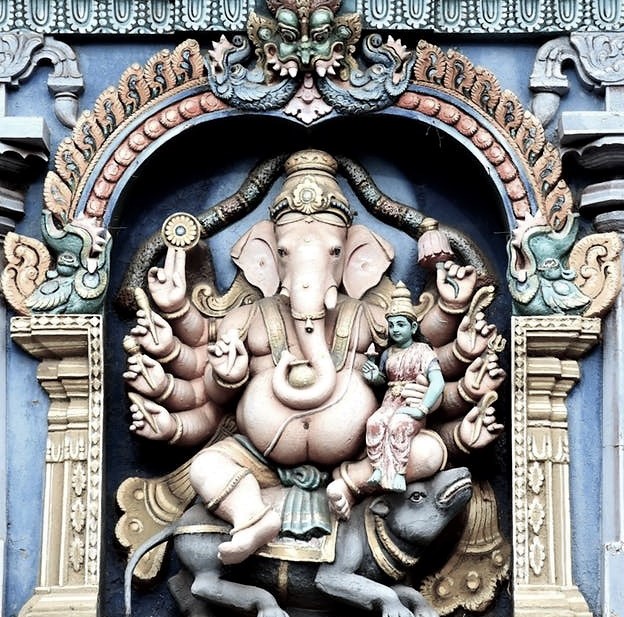- Special FeaturesFoundation Year500 YearsSthala TreeTheerthamRathamArchitectureOther SpecialityThis temple is unique in allowing the devotees to perform puja to the Devi themselves, without distinction of caste or creed. As directed by Devi Herself.
- Sthala Puran
This temple is built with three different stories and based on the shape of Shri Meru Yantra. This temple, mainly based on Shri Chakra means 3-dimensional projections. This temple belongs to the Shakta school of Hinduism. Here Sahasrakshi means goddess who has thousand infinite eyes.
According to the Devipuram official history, Devi Yajna approached with his Putrevu family for temple construction. Guruji was looking for land for the Devi temple. In the vicinity of donated property, there was small hill rock where he spent time for meditation. One day while he is doing the meditation, he experienced himself on Peetam and four other performed home with flames. A final round of the ritual, he felt that heavy object placed on his heart.
After Guruji waking up from meditation state he found dig the site, then he found Shri Chakra Maha Meru made of Panchaloha. Late it discovered that yagna had been performed in that area more than 250 years ago. Later Guruji has some visions of Devi like 16 years old girl. And he constructed Kamakhya Peetham and Siva temple on the peak
- Architecture
Devipuram's primary focus is the Sahasrakshi Meru Temple, a unique three-story structure built in the shape of a Sri Meru Yantra; i.e., three-dimensional projection of the sacred Hindu diagram known as Sri Chakra, which is central to Srividya upasana (an ancient and intricate form of Tantric Shakta worship). Measuring 108 feet (33 m) square at its base and rising 54 feet (16 m) high, the temple has become an increasingly popular pilgrimage destination over the past decade. Two other shrines, the Kamakhya Peetham and Sivalayam, are located on hills adjacent to the main temple.
- Alankar of Deity
- Prayers and BenefitsSpecial Vratas and Prayers
Devotees can perform Panchamrutha abhishekam themselves(with their own hands) on every Pournami and Amavasya to the main deity Sri Sri Sri Sahasrakshi Rajarajeswari Devi. Devotees can perform Rudra Abhishekam to the Panchabhoota Lingeswara Swamy in Dakshavati, to Ananda Bhairava, and to the Kshetrapalaka Sri Raja Rajeswara on the hill top Sivalayam. Devipuram is run by women in-house trained women priests. It runs on Guruji’s principles and Devi’s commands.
Offerings to DeityStotras and Mantras
- FestivalsNavaratri, Ganapati, MahasSivaratriNavaratris - Lalithambika, Syama, Varahi, Ganapati, Dasara. The 9-day festival is celebrated 4 times every year for : Syama Devi in Magha Masam, Lalithambika in Chaitra Masam, Sri Varahi Devi in Ashada Masam, Sri Karya Siddhi Ganapati in Bhadrapada Masam, Dasara Brahmotsavam 15 days- (Padyami to Pournami) in Ashwiyuja Masam. Kartika Masam: In the unique Siva Kshetrams of Dakshavati and Sivalayam, Abhishekas and Homas are performed on all the 4 Mondays and Pournami. The unique aspect is that you can offer Abhisheka with your own hands to Lord Siva! MahaSivaratri: Ekadasa Rudra Homam, Rudrabhishekam, and the divine Kalyanam
- Sodasha Upcharas
- Prasadhas
- Social ActivitiesAnnadhanMarriageEar BoringHead ShaveDanaasEducation FacilitiesSocial DrivesOther Activities
- Arjita Seva
- Tags

